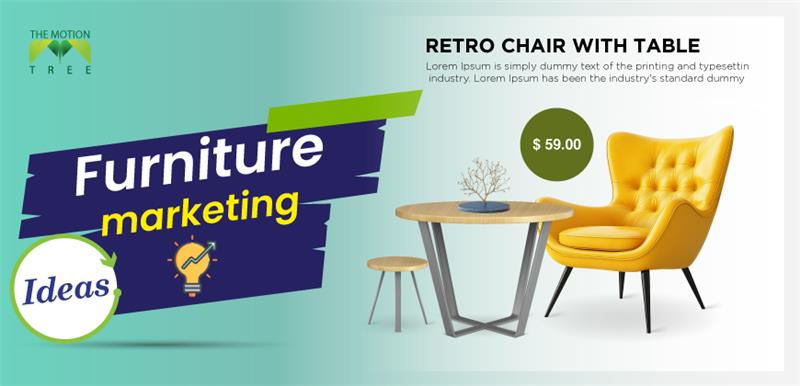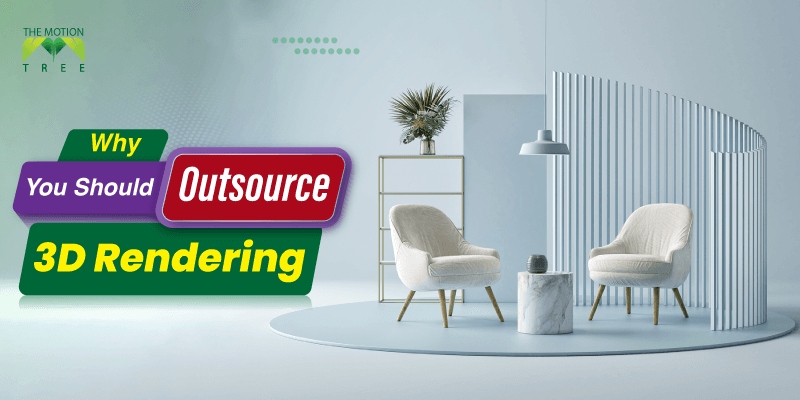![]() +1 929-458-6213
+1 929-458-6213
Having strong furniture marketing ideas and using them to market your furniture business isn’t optional anymore. It’s critical.
Why? Because the global furniture market is projected to reach US$729.7 billion, with other estimates placing it near US$540 billion, climbing steadily through the coming decade.
Statistics show that consumers are more informed than ever. 70% research products online before buying; 65% weigh a brand’s online presence heavily when deciding.
The majority of consumer now discover new furniture brands via social media, and more than half of them say social platforms influence their purchase choice.
With such digital savviness, furniture brands must adapt, and these ten smart, data‑driven strategies are your blueprint.
Table of Contents
Toggle10 Best Furniture Marketing Ideas

The below furniture marketing ideas are result-driven and future-proof. You will not only get to know about the newest technology using marketing like 3D/AR, but also about viral social media marketing using social media influencers.
1. Augmented Reality (AR) & Interactive Content to Build Confidence

Modern shoppers are visual thinkers. 40% of buyers prefer AR tools, and brands using AR report a 40% increase in purchase confidence.
Interactive elements—like 3D models, room visualizers, and virtual consultations—encourage longer session times (buyers spend ~3 more minutes on interactive sites).
How you can implement:
- Integrate AR “place in your room” viewers in product pages.
- Offer live virtual design sessions. Over 45% of consumers express a preference for brands that offer this.
- Use 3D/AR previews as standard for high-ticket items like sofas, beds.
Producing 3D/AR furniture product designs can be a challenge as it’s a growing technology and not many of the providers hold professional experience.
The Motion Tree is one of the very few 3D model service providers that have years of experience in producing high-quality 3D or AR designs. They offer professional yet premium product modeling services at an affordable rate.
2. Powerful Digital Research & Brand Presence
Before considering buying, most furniture shoppers research online. 65% of them say brand presence, including site credibility and aesthetics, is a key deciding factor.
Brands that build authority through SEO, rich content, and trust signals (reviews, clear policies) attract and convert explorers into buyers more effectively.
How you can implement:
- Write detailed product pages enriched with keywords like furniture marketing ideas, modular sofa benefits, etc.
- Invest in SEO: brands see up to 45% more organic traffic when they prioritize SEO and content marketing.
- Use customer testimonials and trust badges to build credibility.
3. Social Media Discovery & Influencer Collaborations

Nowadays, consumers roam around social media platforms for most of their leisure time. So they discover new furniture brands via social channels such as Instagram and Pinterest.
Influencer partnerships like “room tour” content are very powerful and work great for furniture products.
In China, fashion influencers who showcase their home setup (#roomtour) have driven tangible sales growth for furniture brands. Luxury fashion-to-home brand crossovers (like Gucci, Hermès) are also capitalizing on millennial home decor trends.
How you can implement:
- Partner with interior, lifestyle influencers for sponsored visuals or tours of your furniture in real homes.
- Customers posting their setups and reviews bring higher conversion rates.
- Adoption rose 60% last year for furniture inspiration because of Pinterest. It drives both traffic and conversions.
4. Video Marketing & Visual Storytelling
Visual media drives furniture sales, and that’s a fact you can’t ignore. 70% of buyers cite images/videos as key factors in their decision-making.
Meanwhile, 60% of brands already use video content to showcase products, not just listings, but styled storytelling that builds lifestyle associations.
Produce short clips such as room styling ideas, product features, assembly speed, and customer testimonials. On top of that, you can post behind‑the‑scenes like the craftsmanship, material sourcing, and sustainability. Use YouTube, Instagram Reels, and TikTok to boost visibility and engagement.
5. Mobile Optimization & Seamless Checkout

With 92% of furniture shoppers researching via mobile, and mobile-optimized sites converting at twice the rate of desktop-only ones, ensuring a frictionless mobile experience is mandatory.
Give attention to responsive design, fast page loading, and easy navigation. Try to simplify the checkout and digital wallet features.
Keep transparent shipping calculators, because customers sometimes abandon carts over higher shipping fees.
6. Personalized Email & UGC Strategies
Personalized email campaigns can boost your sales. On the other hand, displaying user reviews lifts conversion by 20%. Email open rates in furniture retail hover around 25% above typical retail benchmarks.
How you can implement:
- Segment customers (e.g., by interests, previous purchases) and send personalized recommendations.
- Encourage customers to submit photos/reviews and share UGC in newsletters or product pages.
- Trigger emails for abandoned carts, browse abandonment, or after-purchase satisfaction requests.
7. Cross‑Channel & Retargeting Campaigns
Furniture brands engaged in cross-channel marketing give you higher engagement. When you run retargeting ads, it helps you recover abandoned carts. Many famous brands like IKEA and Amazon use retargeting to remind browsers of previously viewed items.
So, run social ads, search ads, and display ads in an integrated funnel. Also, use dynamic product ads to show users the exact pieces they viewed. Along with the ads, align messaging across email, social, site, and PPC to reinforce brand voice and offers.
8. Experiential Retail & Showroom Integration
While e‑commerce dominates research, experiential retail remains relevant. Modern consumers value brand experiences—pop‑ups, VR showrooms, “sleepover in Ikea” style events create emotional bonds and drive sales.
So, you can host events where customers can interact with products, try materials, and ask experts. Use the latest technology and incorporate VR or AR in-store to allow instant room simulation. Combine online and offline via online booking of showroom visits, virtual tours, or hybrid consultations.
9. Visual Merchandising & Cross‑Merchandising In‑Store
Principles of visual merchandising are still a crucial and effective furniture marketing idea for marketing furniture. “Less is more.” Product at eye‑level sells better, and clutter repels shoppers. Cross‑merchandising, bundling complementary pieces, increases average order value.
So, arrange physical store layouts to highlight styled bundles (for example, sofa + rug + side table). Use point‑of‑purchase displays to show room layouts in miniature. One thing to remember is that you must limit overcrowding. Showcase your product to curated selections rather than overwhelming customers.
10. Loyalty Programs & Trade Promotions

Repeat sales and retention are vital; retaining existing customers yields 60–70% success, vs. 5–20% success selling to new audiences. Loyalty programs increase spend likelihood (62%) and brand preference (59%). Additionally, trade promotion collaborations (e.g., supplier-funded discounts or bundled offers) can boost visibility in retail channels.
Launch a loyalty or rewards program with perks like discount milestones, free shipping, and referral benefits. Adding to it, you can partner with suppliers or retail partners on joint promotions and in-store displays. Use trade discounts, limited-time bundles, or co-marketing to drive foot traffic and conversions.
Final Words
In the furniture market, trust, visual storytelling, and seamless experience dominate. These 10 furniture marketing ideas will help brands to build trust and increase sales. From using the latest technology like AR and social influencers to optimizing mobile checkout and building loyalty, each strategy is backed by strong data and consumer behavior insights.
If you integrate this approach, optimize your digital presence, invest in interactive content, personalize channels, and connect with customers both online and offline in a couple of years, you can be the market leader.
Related Posts






